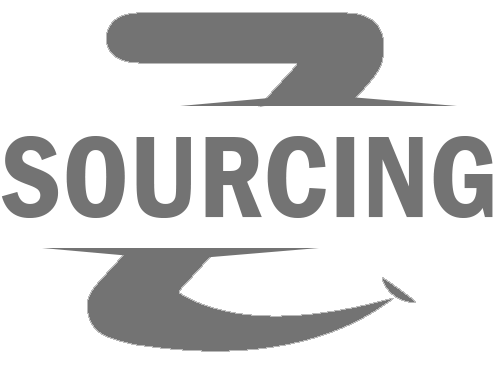Discover how to find the top talent anywhere in the world by learning the best followers for remote staff sourcing. With our advice, you can effectively manage your remote workforce and streamline your virtual team-building and talent acquisition processes cancan effectively manage your remote workforce and streamline your virtual team building and talent-acquisition processes with our advice.
As businesses increasingly turn to remote work, finding the best talent from anywhere in the world has become more important than ever before. However, sourcing and managing remote staff can present unique challenges, especially if you are new to the process. In this article, we will discuss some best practices for remote staff sourcing to help you find the best talent for your team.
1) Clearly Define Your Requirements
Before you begin your search for remote staff, it is important to have a clear understanding of the roles and responsibilities that you need them to fulfill. Define the specific skills and experience that are required for the position, as well as any certifications or other qualifications. This will help you to narrow down your search and find candidates who are best suited for the role.
2) Use Multiple Recruitment Channels
When sourcing remote staff, it is important to cast a wide net and use multiple recruitment channels. Some effective channels include job boards, social media, industry-specific forums, and personal networks. By using multiple channels, you can reach a larger pool of candidates and increase your chances of finding the best talent.
3) Screen Candidates Carefully
When you receive applications from potential candidates, it is important to screen them carefully. Look for candidates who have the skills and experience that you need, as well as a track record of successfully working remotely. Conduct thorough interviews to get a sense of their communication skills and work ethic, and ask for references to confirm their experience.
4) Provide Clear Communication and Expectations
Effective communication is crucial when working with remote staff. Provide clear expectations and guidelines for communication, including how often you expect to hear from them and what tools you will use to communicate. Encourage open communication and provide feedback regularly to ensure that your remote staff is on track and working effectively.
5) Use Project Management Tools
To effectively manage a remote team, it is important to use project management tools that allow you to track progress, assign tasks, and collaborate with your team. Some popular project management tools include Trello, Asana, and Basecamp. These tools can help you to stay organized and ensure that your remote staff is working efficiently.
6) Partner with remote staffing agencies
Partnering with remote staffing agencies can be an effective way to find the best talent. These agencies specialize in sourcing remote talent and can help you find candidates that match your specific needs and requirements. Additionally, remote staffing agencies handle the administrative tasks associated with hiring and managing remote staff, making the process more efficient.
7) Conduct thorough interviews
When sourcing remote talent conducting thorough interviews is critical. Video conferencing platforms like Zoom, Skype, and Google Meet make it easy to conduct remote interviews. During the interview, ask open-ended questions to get a sense of the candidate's communication and collaboration skills. Additionally, assess their technical skills and experience to ensure they have the necessary qualifications for the job.
Conducting thorough interviews is a critical step in the hiring process. It allows you to assess a candidate's skills, experience, and cultural fit with your organization.
Here are eight important points to keep in mind when conducting interviews:
-
Prepare in advance: Prepare a list of interview questions that relate to the position and the skills required. Review the candidate's resume and cover letter before the interview to ensure you have a good understanding of their qualifications.
-
Create a comfortable environment: Make the candidate feel at ease by creating a comfortable environment. Start with a friendly introduction, offer a beverage, and explain the interview process.
-
Begin with open-ended questions: Begin with open-ended questions to get the candidate talking. This will help you gain insights into their personality, communication style, and thought process.
-
Ask behavioral questions: Behavioral questions allow you to understand how the candidate has handled specific situations in the past. For example, "Tell me about a time when you had to deal with a difficult customer."
-
Listen carefully: Listen carefully to the candidate's responses and take notes. Pay attention to their body language, tone of voice, and level of enthusiasm.
-
Probe for details: Probe for details by asking follow-up questions. For example, "Can you give me an example of how you implemented the new process?"
-
Assess cultural fit: Assess cultural fit by asking questions related to the organization's values and culture. For example, "How do you feel about working in a fast-paced environment?"
-
Allow time for candidate questions: Allow time for the candidate to ask questions. This will give you insights into their level of interest in the position and the organization. It will also help you address any concerns or questions the candidate may have.
8) Offer competitive compensation and benefits
Offering competitive compensation and benefits is essential when sourcing remote talent. In addition to salary, consider offering perks like health insurance, retirement plans, and paid time off. These benefits can help you attract top talent and retain remote staff in the long run.
In conclusion, remote staff sourcing can be a valuable way to find the best talent from anywhere in the world. By following these best practices, you can effectively source and manage a remote team, enabling you to take advantage of the many benefits that remote work can offer. Remember to define your requirements, use multiple recruitment channels, screen candidates carefully, provide clear communication and expectations, and use project management tools to effectively manage your remote team.

